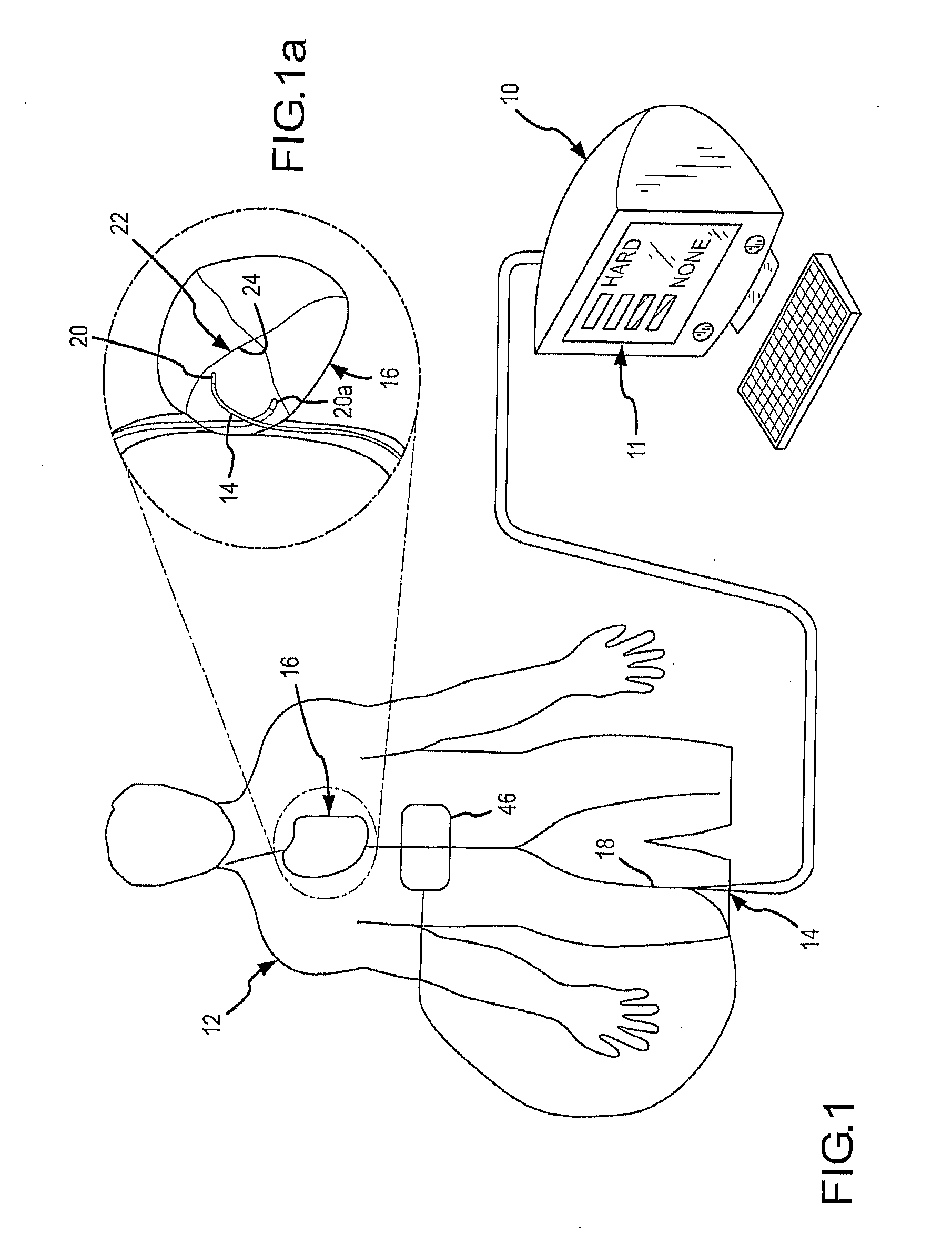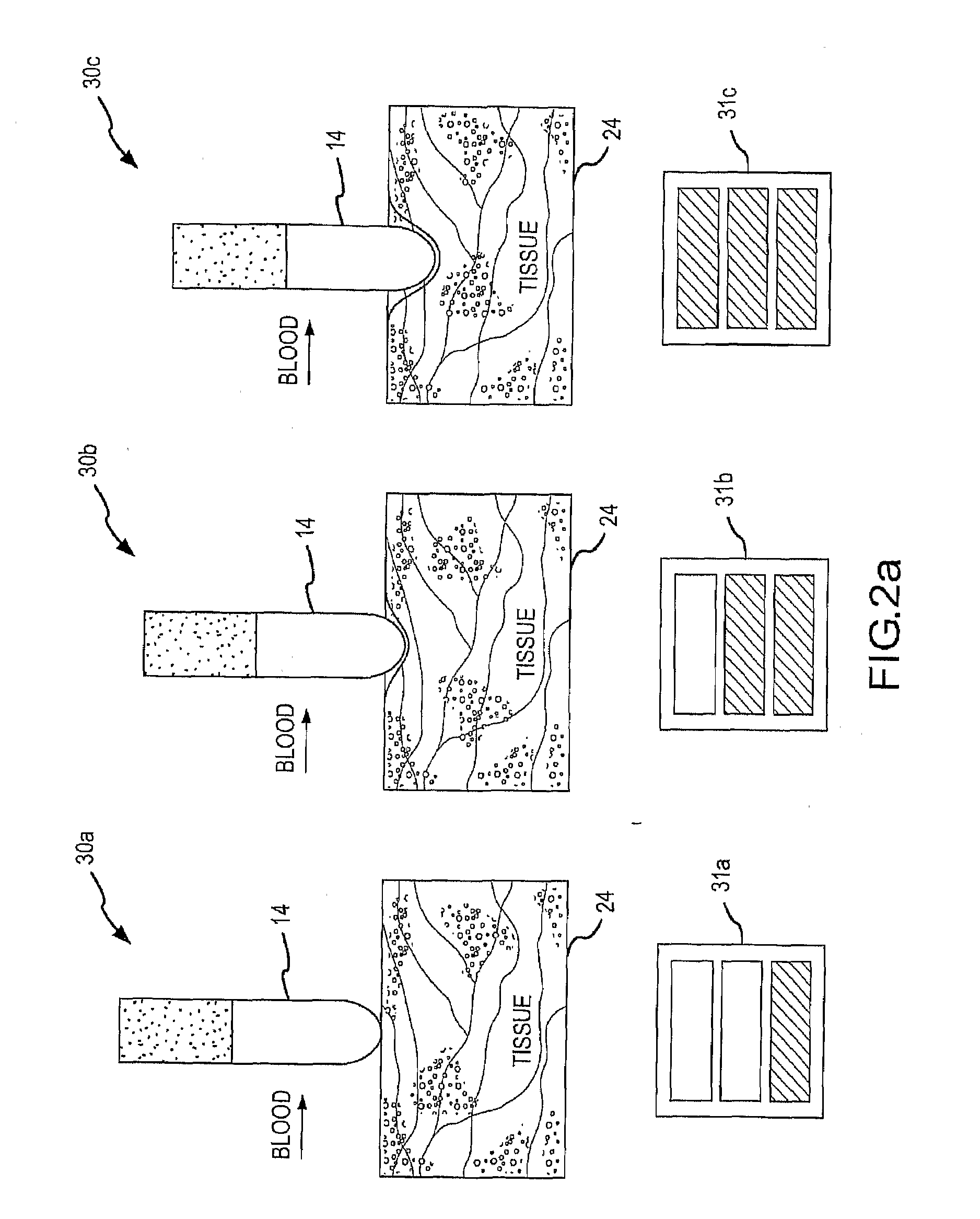Design of Handle Set for Ablation Catheter with Indicators of Catheter and Tissue Parameters
- Summary
- Abstract
- Description
- Claims
- Application Information
AI Technical Summary
Benefits of technology
Problems solved by technology
Method used
Image
Examples
Embodiment Construction
[0042]The present invention relates to providing an indication regarding a condition of interest, e.g., a level of electrode coupling, to a physician via guidance instrumentation of an electrode catheter system. While such an indication may be provided in connection with various parameters of interest in connection with an electrode catheter procedure and, specifically, in connection with a variety of electrode coupling assessment technologies, certain advantage are achieved by using an assessment technology capable of accurately identifying multiple electrode coupling levels such as a phase angle technology. In the following description, certain phase angle-related technologies are first described. Thereafter, various mechanisms for outputting information to the physician are described in detail.
[0043]FIG. 1 is a diagrammatic illustration of an exemplary electrode catheter system 10 which may be implemented to assess electrode-tissue contact during a tissue ablation procedure for a...
PUM
 Login to View More
Login to View More Abstract
Description
Claims
Application Information
 Login to View More
Login to View More - R&D
- Intellectual Property
- Life Sciences
- Materials
- Tech Scout
- Unparalleled Data Quality
- Higher Quality Content
- 60% Fewer Hallucinations
Browse by: Latest US Patents, China's latest patents, Technical Efficacy Thesaurus, Application Domain, Technology Topic, Popular Technical Reports.
© 2025 PatSnap. All rights reserved.Legal|Privacy policy|Modern Slavery Act Transparency Statement|Sitemap|About US| Contact US: help@patsnap.com



